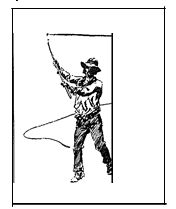American intellectuals have spent much of this century blaming the frontier experience for everything from cultural poverty (John Crowe Ransom) to “our lawless heritage” (James Truslow Adams). The high rates of violent crime in modern cities, they insist, cannot be caused by anything we are doing now that is, hamstringing the law enforcement system, handingout six month sentences for rape, and eternally justifying criminal behavior as the result of economic and racial discrimination. In the minds of academics, our violent ways are in herited from the social anarchy of frontier towns, where we acquired our fascination with firearms. This argument, the stock-in-trade of gun-control fanatics, will have trouble surviving the scrutiny of Roger McGrath in Gunfighters, Highwaymen & Vigilantes: Violence on the Frontier (University of California; Berkeley).
To get a sense of the level of violent crime in the West, McGrath looked at the records of two mining towns in the Sierra Nevadas, Aurora and Bodie, which had dismal reputations for lawlessness. The “Badmen of Bodie” became so proverbial throughout California that crimes all over the West were attributed (usually falsely) to its former inhabitants. There was crime, to be sure, in the mining towns and bad men aplenty. The tales of their exploits alone are enough to make the book entertaining. But was the frontier more crime-ridden than New York or Chicago? The robbery rate in Bodie is computed at 84 per 100,000 in habitants (on the FBI scale) as opposed to the 1980 rates in New York–1,140, Miami–995, and Chicago–294. In fact, the rate for the entire U.S. including rural areas was 243. For burglaries, Bodie’s rate of 6.4 compares favorably with Miami’s 3,282, New York’s 2,661, and–the lowest-rated city in the U.S.–Grand Forks’ 587. The rate of theft in the U.S. (1980) is 17 times that of Bodie. It is harder to compare the data on rape, since Bodie and Aurora offer no recorded cases. Still, the national rate in 1980 was at least 10 times the calculated rate for Boston 1880-82.
The real question, then, is why was the Old West so peaceful and crime-free? For one thing, the miners and young toughs brought with them a code of manners and decency which made distinctions. The mining towns had few women,and most of them prostitutes, but a decent woman was safe not just from outrage but from insult. It was a man’s world–not even prostitutes went into the saloons–but the men respected innocence and honesty when they saw it. They did not worry too much about crimes against property, because–as Mc Grath points out repeatedly–they were all armed. A thief thinks twice before making an attempt upon a man as armed and dangerous as himself. Of course, a few stage coaches were robbed, but not when they were carrying large shipments of gold: those were too well guarded. Capital punishment may not deter crime, but a shotgun rammed under your nose will do it every time.
The one violent crime in which the miners definitely excelled was homicide. The homicide rate in the U.S. today is one-sixth that of Aurora and one-eleventh that of Bodie. And yet there is a difference. The overwhelming number of killings in the mining towns was “between consenting adults.” The killer–who might be better described as the survivor–was almost always acquitted on the grounds of self-defense. Men and women who did not hang out in saloons looking for trouble could sleep safely in their beds. In the very few cases in which an innocent or harmless man was killed, the reaction of the community was swift and certain: the killers were tried and hanged in an orderly fashion by the local Committee of Vigilance. The vigilantes explained their actions as insurance against a breakdown in due process. However, if we can judge from parallel cases in other societies, these “lynchings” were also an effective means of expressing community sentiment. They made it all too clear that, while they were willing to tolerate nearly any level of dueling, brawling, and consensual homicide, real murder was a kind of sacrilege against the social bond.
Men live more by myths than facts and the legends of the Old West are one of the main battle grounds in the struggle for the American soul. For good or ill,this has been a nation of individualists and of community associations that managed to function reasonably well without too much attention from the State. Our life on the frontier was not anarchic or even libertarian. We lived according to a code. When that code was violated, men typically helped themselves to justice. Such a system has its perils, but it cannot be blamed for the contemporary dissolution of law and order in American cities. The real and true myth of the West is of Americans who had intimations of right and wrong and could deliver, even informally, a quality of justice which our vast judicial apparatus seems unable to manage. cc

Leave a Reply